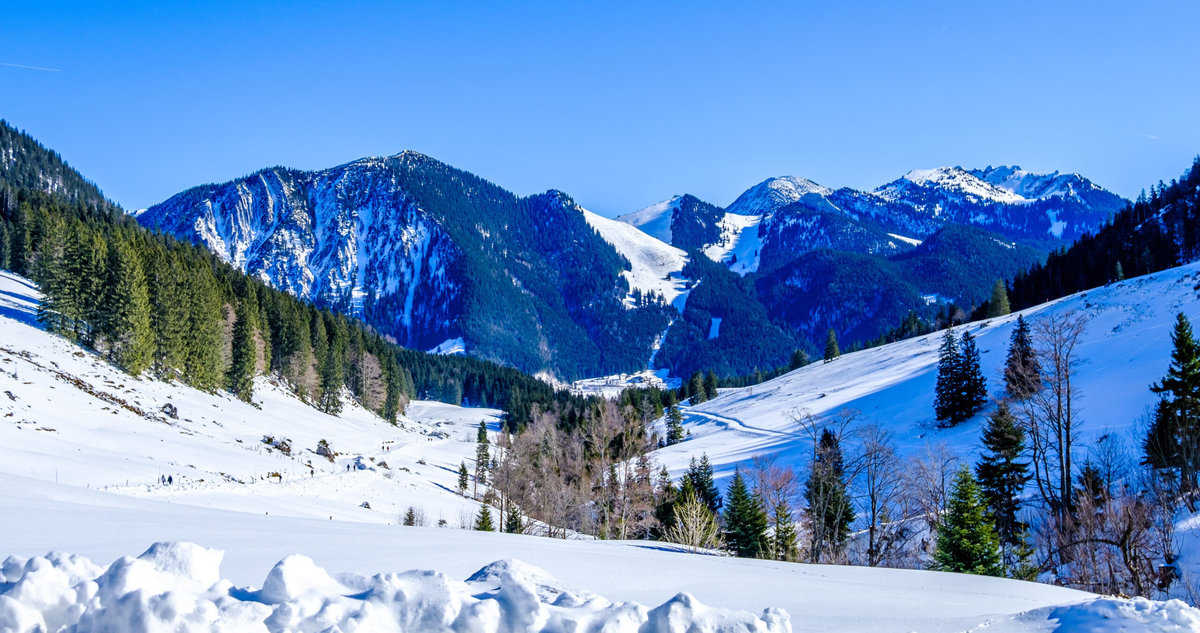Hadrian’s Wall is a historical boundary formed by a series of stone and turf fortifications, stretching over 70 miles in the North-western English countryside and ideal for hiking.
Hadrian’s Wall is sometimes compared to the Great Wall of China, although it is way shorter and narrower than it.
It is nevertheless an ancient engineering achievement constructed across rugged terrains, rivers, streams, and mountains. It is a fun experience to walk alongside Hadrian’s Wall and visit the museums along the pathway.
The fortresses harboring the barracks and museums, along with the long scenic Hadrian’s Wall walk, make it a must-visit place in the United Kingdom.
Contents
How old is the Hadrian’s Wall?
Construction of Hadrian’s Wall began years after Emperor Hadrian ascended the throne in 117 A.D. It was begun in 122 A.D. and completed within six years. Since then it has undergone numerous extensions and additions.
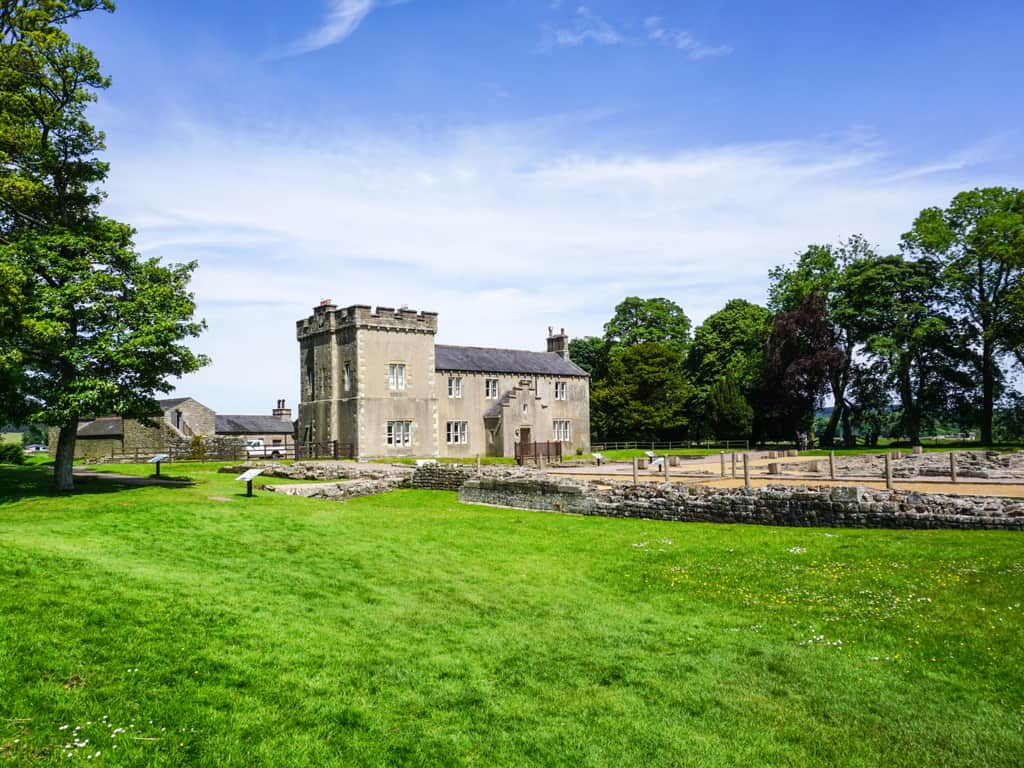
Why was it built?
The Roman Empire had expanded enough, and now with Emperor Hadrian on the throne, it sought to protect what it had acquired so far.
Thus the clear purpose of the Hadrian Wall was to protect the land from the Caledonians and other barbarian troops.
Who built it?
The Wall was built by the Romans on the orders of Emperor Hadrian shortly after their conquest of Britain.
The inscriptions on various sections of the Wall indicate that the British army had Hadrian’s Wall built.
Heavily armed infantrymen worked hard over six years to build Hadrian’s Wall.
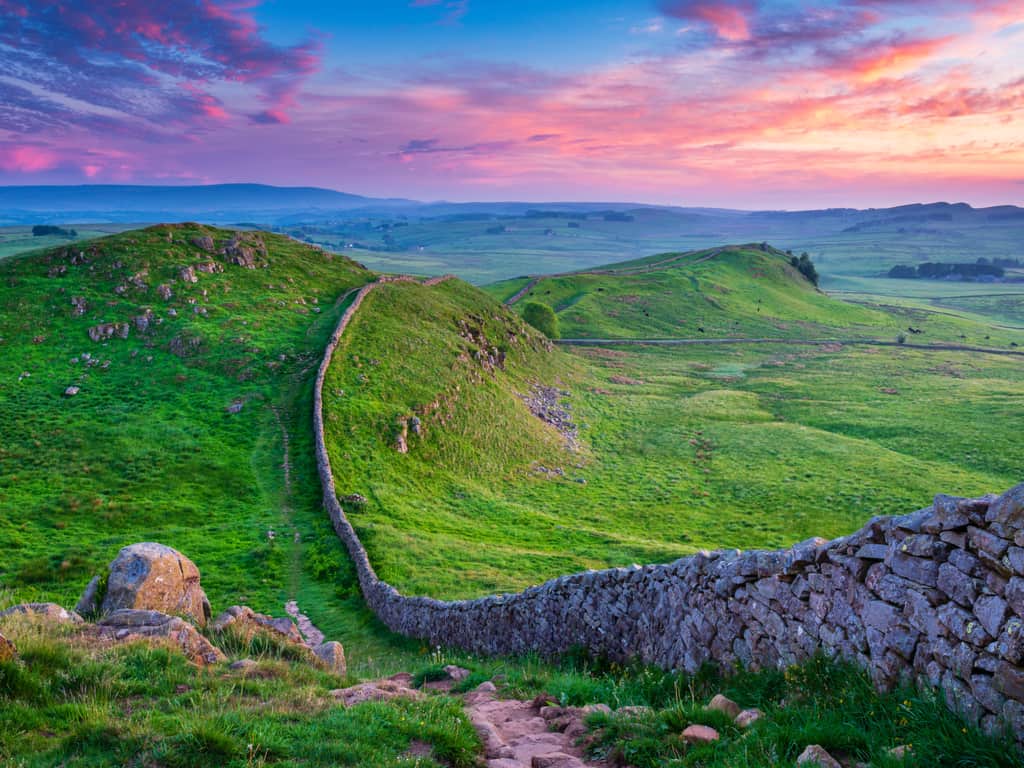
How long is Hadrian’s Wall?
Hadrian’s Wall is located near the border between present-day Scotland and England.
It was built in an east-west direction and stretches 73 miles from Wall’s end on the River Tyne in the east to Bowness on the Solway Firth in the west.
Hadrian’s Wall is a great place for walking, and nature lovers with a penchant for ancient stonework will hardly find a more beautiful place anywhere else in the world.
How to plan a Hadrian’s Wall walk?
Essential for planning to walk Hadrian’s Wall is that you determine the direction in which you want to walk it.
The classic route walking Hadrian’s Wall follows the construction of the wall from east to west. This offers several advantages. On the one hand, you observe the change in landscape from the urban hustle and bustle of Newcastle to the idyllic expanses of Northumberland to the final destination by the sea. On the other hand, you follow the course of the sun and are rewarded with atmospheric sky colours and sunsets when the sky is clear.
However, there are also hikers who walk Hadrian’s Wall from west to east and thus have the Atlantic wind at their back. Be sure to determine the direction at the beginning of your trip planning.
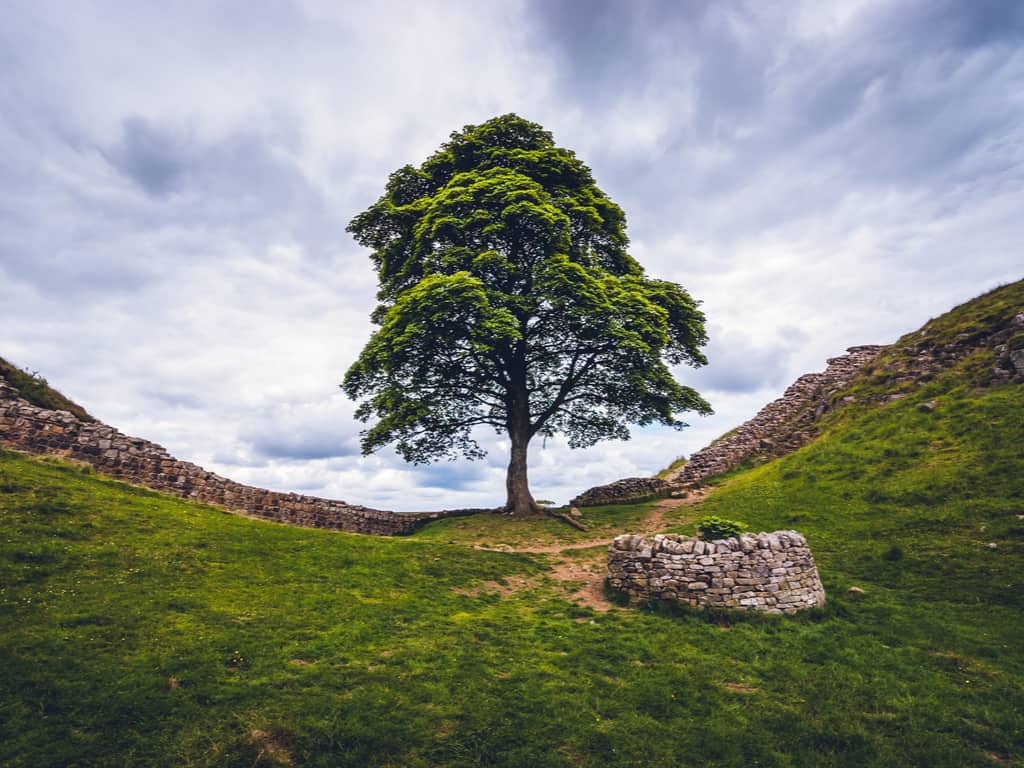
How to get to there?
All set to walk Hadrian’s Wall along the footsteps of an ancient Roman soldier?
If you happen to start from Newcastle, we highly recommend taking a train from Newcastle to the Hexham town, followed by catching Hadrian’s Wall Country Bus AD 122. This route covers the major part of the Wall.
You also get to see the forts of Housesteads and Vindolanda and the Roman Army Museum close to greenhead. Thus you get to visualize the Wall in a spectacular setting.
Also, there are beautiful and scenic stretches of the Wall near Cawfields and Steel Rigg in the Northumberland National Park, England.
Hadrian’s Wall facts
Emperor Hadrian’s successor Antoninus Pius built yet another wall named the Antonine Wall, located in modern-day Scotland. He abandoned the Hadrian’s Wall and established his center elsewhere in the Antonine Wall. Subsequently, this Wall was abandoned as well, following its failure in defending from the nomadic.
Only 10% of the ancient Wall is currently visible. The Wall has suffered a lot of damage in the past 2,000 years. They were mined for stones to build churches and buildings.
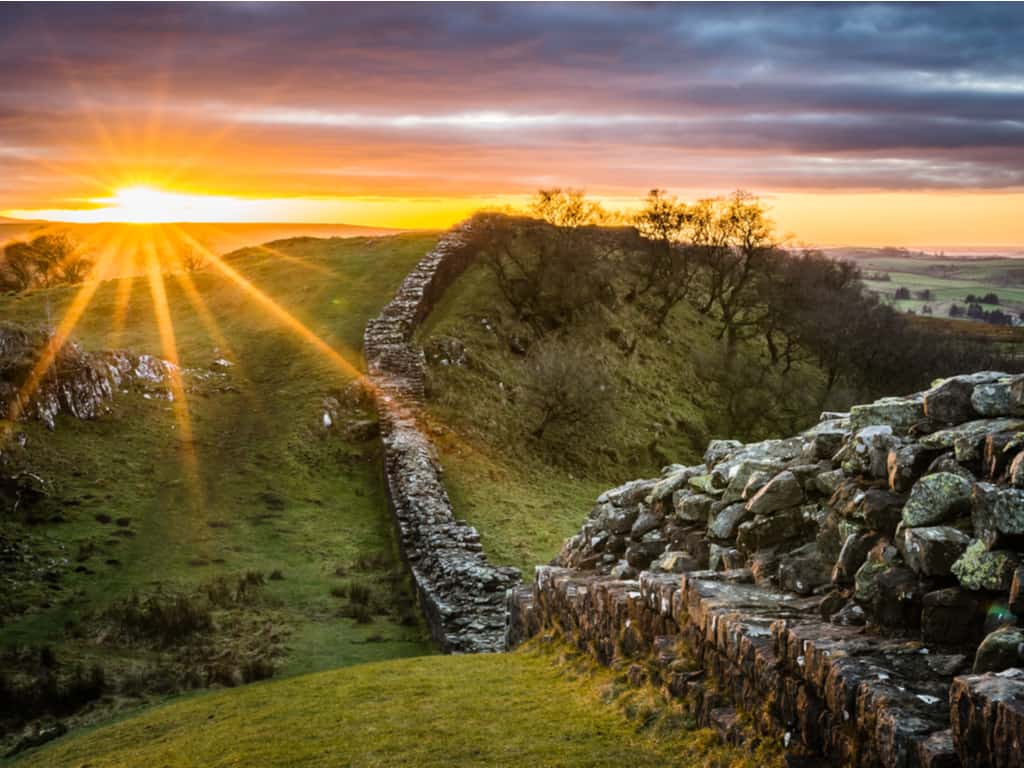
There is sufficient convincing evidence for historians to believe that a lot of archaeological sites are yet to be discovered in the vicinity of the Wall in the Hadrian’s Wall map. This fascinating ancient landmark was finally designated as a UNESCO World Heritage Site in








